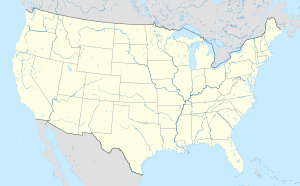Santee National Wildlife Refuge facts for kids
Quick facts for kids Santee National Wildlife Refuge |
|
|---|---|
|
IUCN Category IV (Habitat/Species Management Area)
|
|

Bald cypress forest in autumn, Cuddo Unit of refuge
|
|
| Location | Clarendon County, South Carolina, United States |
| Nearest city | Summerton, South Carolina |
| Area | 15,000 acres (61 km2) |
| Established | 1941 |
| Governing body | U.S. Fish and Wildlife Service |
| Website | Santee National Wildlife Refuge |
Santee National Wildlife Refuge is a 15,000-acre (61 km2) refuge alongside Lake Marion, an impoundment of the Santee River of Clarendon County, South Carolina. The refuge is especially important because its many wetlands support migratory birds. The refuge also contains the Santee Native American mound, which is the farthest eastern known representation of the Mississippian culture. Later built upon this same mound was the Revolutionary British Fort Watson, which was taken by Marion's Brigade in April 1781. The site has been an important site of archeological investigations.
Within the refuge, which consists of mixed hardwoods and pines, marsh, old croplands, impoundments and open water, is a large diversity of wildlife, including bald eagles, and even the peregrine falcon. More common are deer, raccoons, bobcats, alligators, teal, wood ducks, Canada geese, mallards, pintails, red-tailed hawks, red-shouldered hawks, and wild turkeys.
The refuge was established in 1941. The refuge was formerly much larger, but was reduced greatly in size in 1976 when the Lake Moultrie section in Berkeley County was discontinued due to lease termination.


